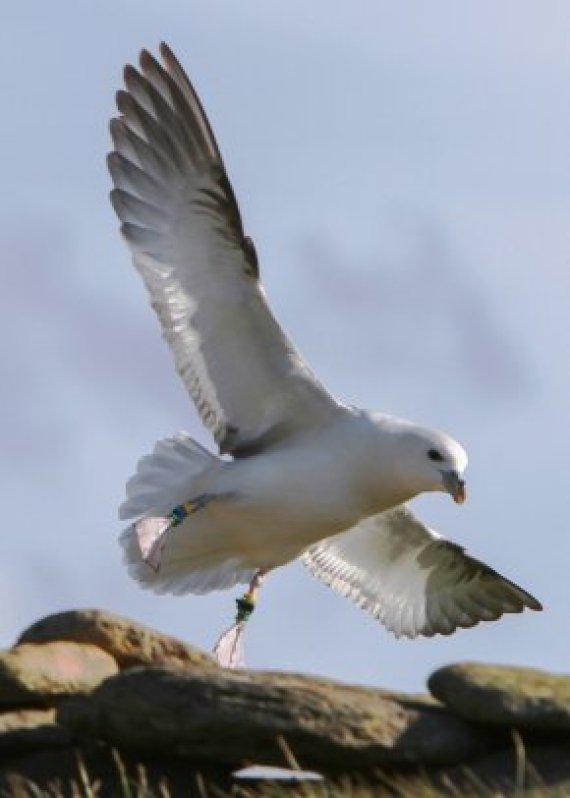Photo: Ewan Edwars. A Northern fulmar with a GLS logger near the Scottish island of Eynhallow.
For many birds, we only know roughly where they spend the winter—and often not at all. Transmitters help, but there is an alternative according to an international team of scientists writing in Marine Biology. The new method makes use of breast feathers, which are easy to pluck from brooding birds. The researchers tested the method on a breeding colony of Northern fulmars on Eynhallow, one of the Orkney Islands off the north coast of Scotland. Some of the birds (163 in total) were also given a GLS logger (GLS stands for ‘global location sensing’).
The study showed that the birds spent the winter at one of two locations: further west in the ocean or further northeast on the continental shelf. Chemical analysis of the feathers also showed a strong relationship between the overwintering place and the 15N isotope level in the feathers. Or to put it more accurately, the ratio of this heavier nitrogen atom variant to the usual form. It was possible to use this nitrogen signature to determine the overwintering site of nine out of ten birds.
A study of the birds’ moulting behaviour showed that the breast feathers had acquired the isotopic signature from the overwintering site. Van Franeker’s huge fulmar database stood them in good stead there. He has been cataloguing data for decades on fulmars that wash up dead or get caught and killed in longline fishing. Northern fulmars shed and replace their breast feathers from September to March, i.e. outside the breeding season. So the breast feathers must have acquired their signature during overwintering.
Van Franeker calls the new method a minor breakthrough. ‘Now you don’t have to fit every bird with a transmitter.’ He does however point out that the method has to be recalibrated for each species.

